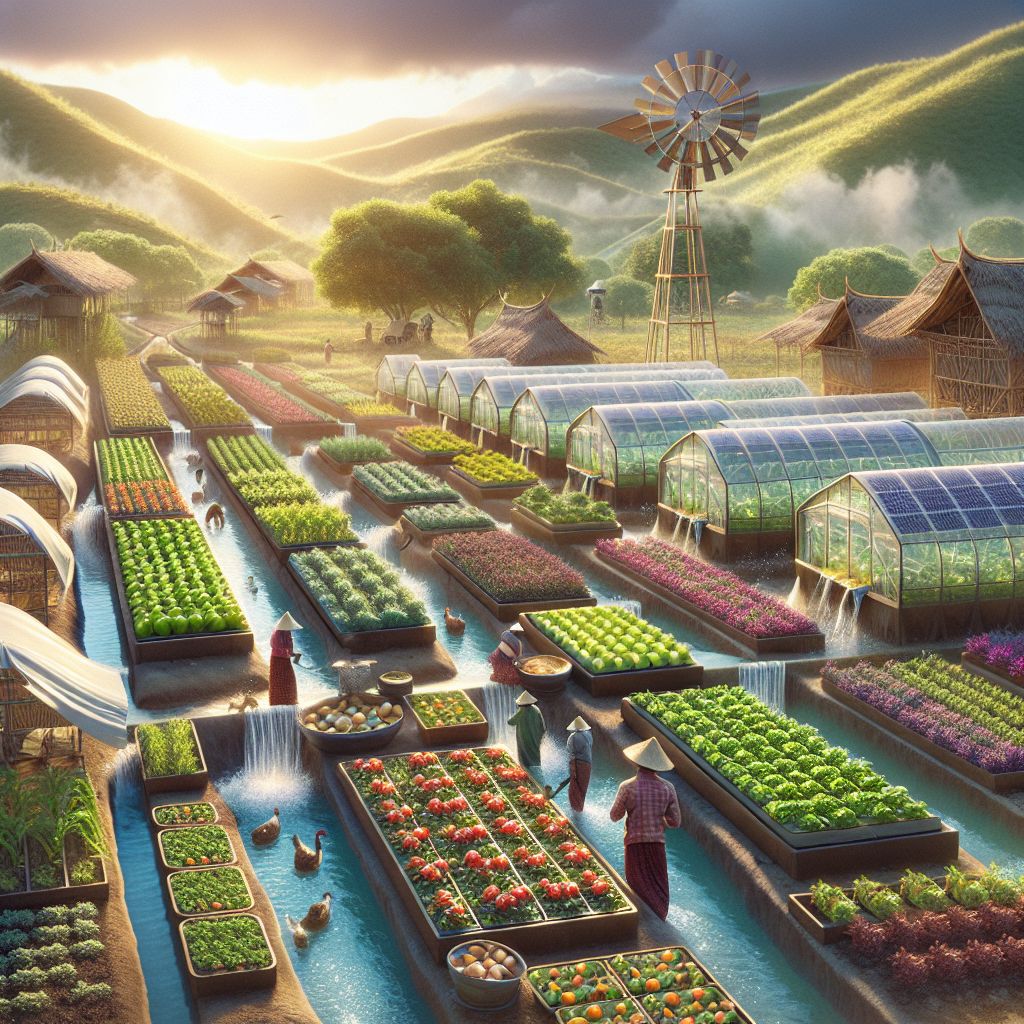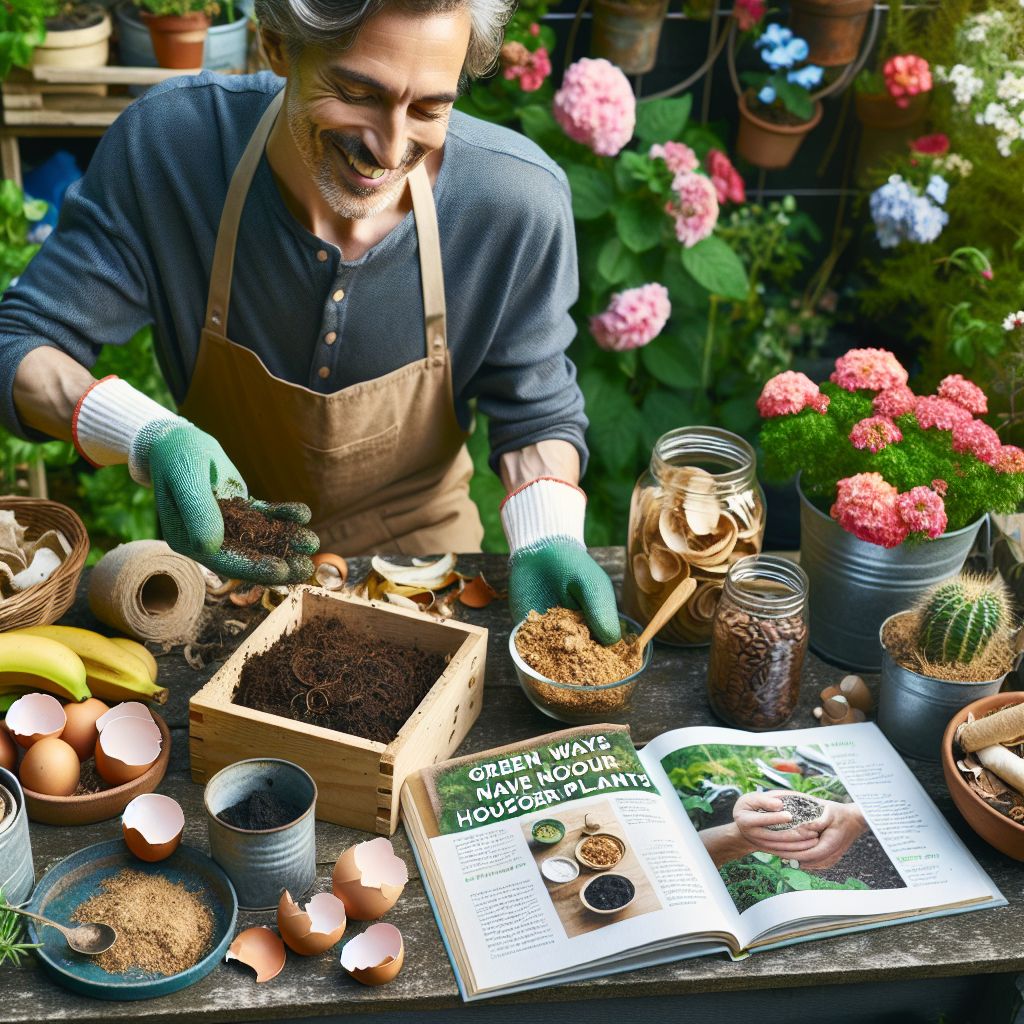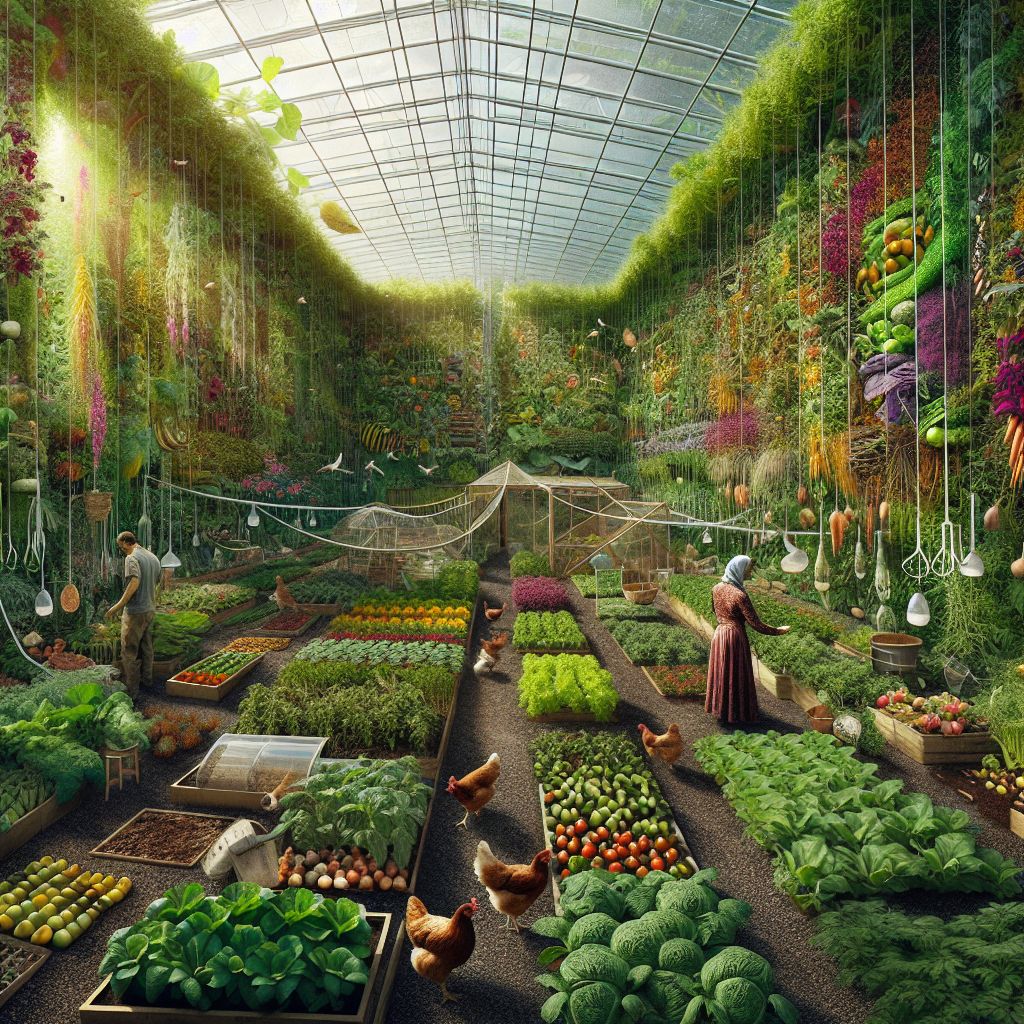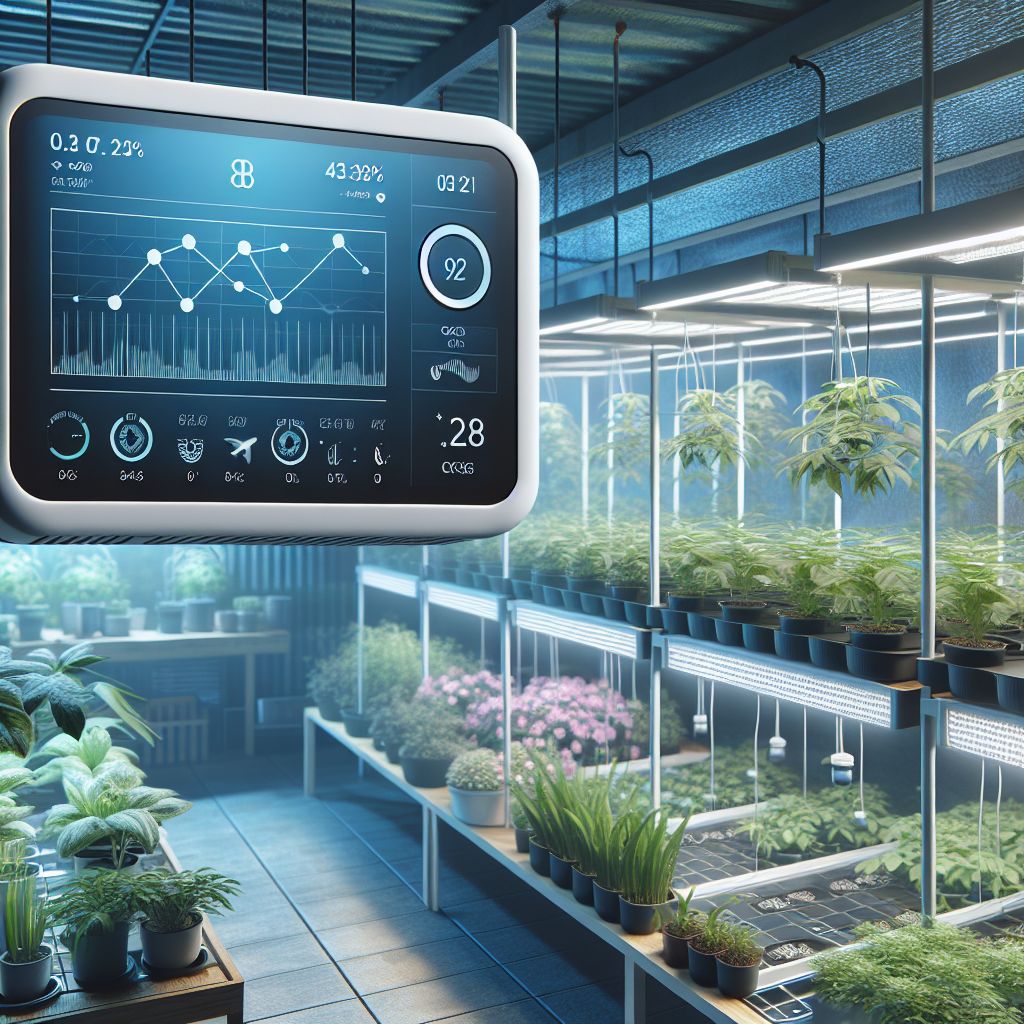Key Takeaways
-
Greenhouses allow you to extend the growing season and protect plants from harsh weather.
-
There are various types of greenhouses suitable for beginners, from simple cold frames to full-sized structures.
-
Choosing the right location for your greenhouse maximizes plant growth and ensures a successful harvest.
-
Understanding the basics of greenhouse setup, including framing and flooring, is essential for longevity and plant health.
-
Maintaining a balanced environment inside the greenhouse is key, which involves managing temperature and ventilation.
Unlock Your Green Thumb: Greenhouse Basics
Think of a greenhouse as a plant’s cozy blanket, keeping it warm when the world outside is a bit too chilly. It’s not just about warmth, though, a greenhouse offers a controlled environment where you can play Mother Nature, tweaking the conditions to suit the needs of your plants. It’s a place where you can nurture life from a tiny seed to a flourishing plant, regardless of the snow or scorching sun outside.
Why Choose a Greenhouse?
First off, greenhouses are like time machines for plants. They give you the power to start growing early in the spring and keep on harvesting well into the colder months. This means fresh lettuce in February and strawberries in November. Besides that, greenhouses shield your tender plants from frosts, pests, and diseases. Most importantly, they can turn gardening from a seasonal hobby into a year-round passion.
And let’s not forget the joy of being surrounded by greenery, no matter the weather outside. There’s something incredibly rewarding about tending to your own little ecosystem, watching it thrive under your care.
Types of Greenhouses for Beginners
Now, let’s talk about where to start. There are several types of greenhouses to consider.
-
Cold Frames: These are the simplest form of greenhouses. They are essentially transparent boxes that trap heat from the sun, perfect for hardening off seedlings or protecting a few plants.
-
Starter Greenhouses: These are small, often portable structures that can fit on a patio or in a small yard. They’re great for getting a feel for greenhouse gardening without a huge investment.
-
Hoop Houses: Made with a series of large hoops covered with heavy-duty plastic, these are an affordable option for larger-scale growing.
-
Panel Greenhouses: These use polycarbonate panels and are sturdier than hoop houses. They provide better insulation and are a great all-season option.
Each type has its pros and cons, but they all serve the same purpose, to create the ideal growing conditions for your plants.
Cold Frames:

Pros:
-
Provide a 10-20°F temperature boost compared to outdoor conditions
-
Affordable, can be homemade or purchased as kits
-
Compact, low-profile design takes up minimal space
Cons:
-
Require manual opening/closing of the lid to regulate temperature and airflow
-
Offer less temperature control compared to larger greenhouse structures
Starter Greenhouses:

Pros:
-
Compact, portable size allows placement on patios, balconies, etc.
-
Designed specifically for seed starting and hardening off seedlings
-
Include features like humidity control, shelving, and vents for ideal seed starting
Cons:
-
Limited growing capacity (6-12 plant cells/trays)
-
Less temperature control than larger greenhouse structures
Hoop Houses/Greenhouses:

Pros:
-
Provide a 20-30°F temperature boost compared to outdoor conditions
-
Taller design allows for growing larger plants and vegetables
-
Offer more precise temperature regulation with heating systems
Cons:
-
Require more maintenance, like switching between summer and winter coverings
-
Can be more expensive than cold frames or starter greenhouses
-
Less portable, more permanent structure
Panel Greenhouses:
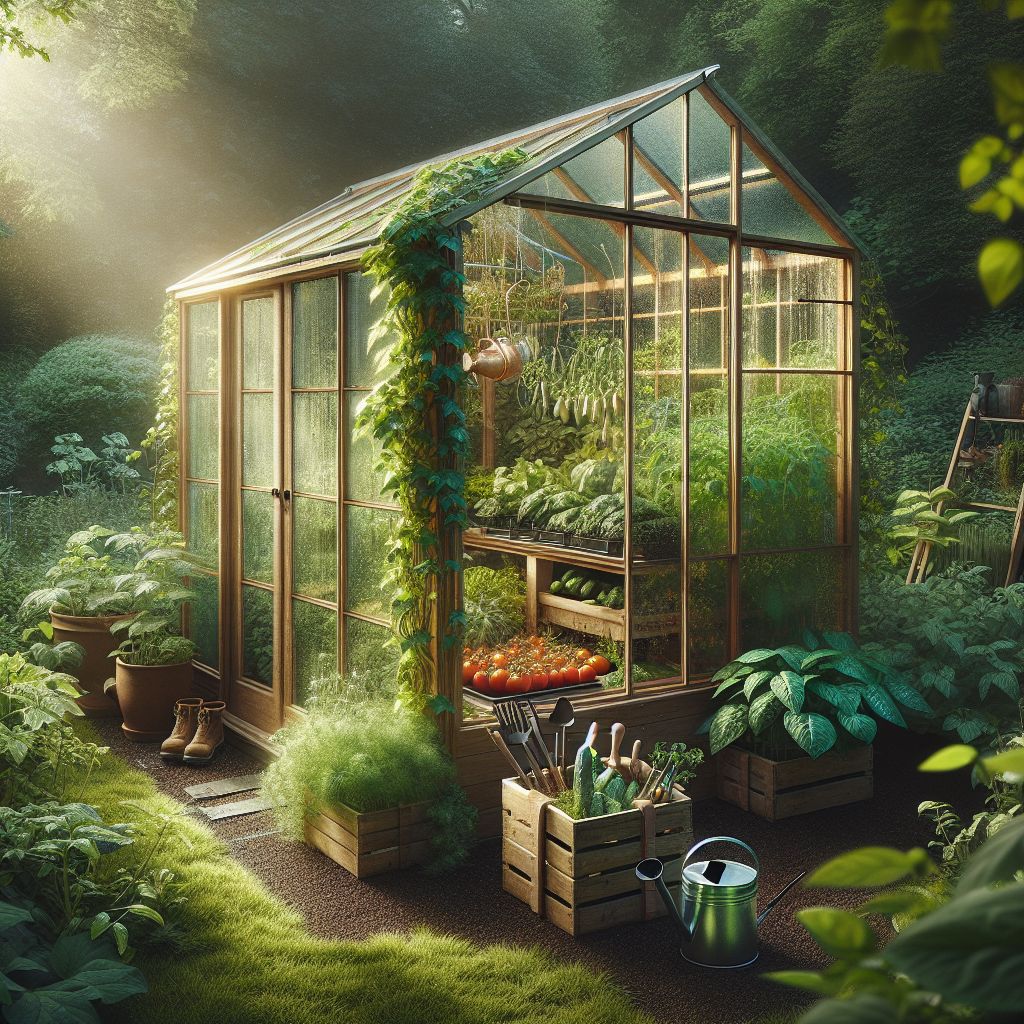
Pros:
-
Customizable, modular design allows for flexible sizing and expansion
-
Provide a more permanent greenhouse structure compared to temporary options
-
Offer more growing space than starter greenhouses
-
Include features like doors, roof vents, and climate control
Cons:
-
More expensive than other greenhouse types
-
Require more complex installation compared to simpler structures
Your Greenhouse Setup Adventure
Once you’ve chosen your type of greenhouse, it’s time to set it up. This is where the fun really begins. Setting up your greenhouse is like laying the groundwork for a secret garden where you can escape and watch your handiwork come to life.
Location, Location, Location: Maximizing Sunlight and Shelter
Choosing the right spot for your greenhouse is crucial. You’ll want a place that gets plenty of sunlight – at least six hours a day, especially during the winter. A south-facing location is usually best. You’ll also want to shelter it from strong winds that could damage the structure or cool it down too much. Sometimes, this means placing it near a fence or a hedge, which can act as a windbreak.
Keep in mind, the sun’s path changes with the seasons, so observe your chosen spot throughout the year if possible. This will ensure that your plants get the light they need to grow strong and healthy.
Laying the Foundation: From Frames to Flooring
The foundation of your greenhouse is as important as the foundation of your home. It needs to be level and sturdy. Most greenhouses have a frame made of wood, aluminum, or steel. Each material has its benefits – wood is natural and beautiful, aluminum is lightweight and rust-resistant, and steel is strong and durable.
As for the floor, you’ve got options. A natural soil floor is great for planting directly into the ground, while a gravel floor offers excellent drainage. Concrete is easy to clean and provides a stable surface, but it can limit your planting options.
Remember, the foundation and flooring you choose will affect the humidity and temperature inside your greenhouse, so choose wisely based on what you plan to grow.
Controlling the Elements: Ventilation and Heating
A well-ventilated greenhouse is a happy greenhouse. Plants need fresh air to prevent diseases and to strengthen their stems. Install vents or windows that can be opened to allow air to circulate. Automatic vent openers are a handy tool, they open and close based on the temperature inside the greenhouse, ensuring your plants are always getting the right amount of airflow.
When it comes to heating, your greenhouse might need a little help on those colder nights. A small electric heater can keep the chill at bay, or you can use solar energy by storing water in barrels during the day – the water will release heat slowly throughout the night.
But remember, too much heat can be just as bad as too little. Monitor the temperature and adjust your heating and ventilation as needed to keep your plants in that sweet spot.
Must-Have Tools for the Greenhouse Gardener
Every gardener’s toolkit is personal, but there are a few essentials that no greenhouse should be without. Think of these tools as the trusty sidekicks that will help you on your growing journey.
-
Gloves: Protect your hands from thorns, splinters, and soil-borne bacteria.
-
Watering Can or Hose: Keep your plants hydrated with a gentle shower.
-
Pruning Shears: Essential for cutting back plants and harvesting your bounty.
-
Thermometer: Monitor the temperature to keep your greenhouse in the ideal range.
-
Soil Test Kit: Test your soil to see what nutrients it may need.
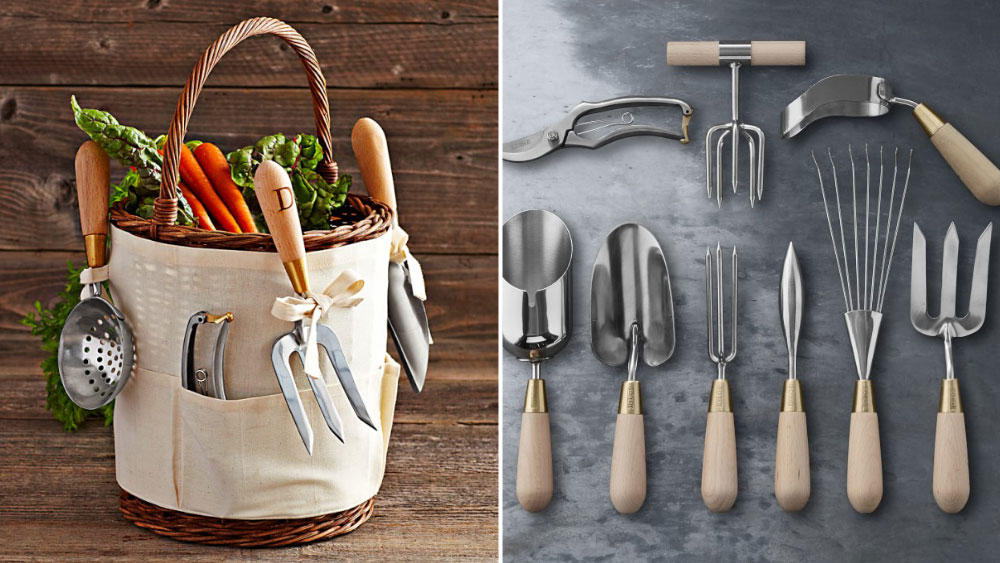
“7 Gardening Tools for Starting a …” from robbreport.com
With these tools in hand, you’re well on your way to becoming a greenhouse guru.
Choosing the Right Soil and Containers
The soil in your greenhouse is the lifeblood of your plants. Opt for a high-quality potting mix that provides good drainage and is rich in nutrients. If you’re feeling adventurous, you can mix your own blend with compost, peat moss, and perlite or vermiculite.
When it comes to containers, make sure they have enough depth for the roots of your plants to grow and that they have drainage holes. You can use pots, grow bags, or even raised beds, depending on what you’re growing and how much space you have.
The Planting Schedule Deconstructed
Timing is everything in the greenhouse. Your planting schedule will be your roadmap through the seasons, telling you what to plant and when to plant it for the best chance of success.
What to Plant and When: A Seasonal Guide
Here’s a rough guide to get you started. For detailed information on planting schedules and seasonal growing tips, check out our comprehensive resources.
Spring: Start seeds for summer vegetables and flowers. It’s also the time for cool-weather crops like lettuce and peas.
Summer: Focus on heat-loving plants like tomatoes, peppers, and cucumbers.
Fall: Begin planting for your winter harvest – think leafy greens and root vegetables.
Winter: Depending on your climate, you might be able to continue growing cool-weather crops or use this time to plan and prepare for spring.
Tailoring the Calendar: Understanding Your Climate
While the seasonal guide above is a good starting point, you’ll need to adjust it based on your local climate. If you live in a colder region, you might need to start seeds indoors earlier or use a heated greenhouse. In warmer areas, you might be able to plant certain crops year-round. Pay attention to the microclimate inside your greenhouse as well, and adjust your schedule accordingly.
Maintenance: The Key to Greenhouse Success
Just like any other garden, a greenhouse needs regular maintenance to keep plants healthy and thriving. This includes monitoring the temperature and humidity, checking for pests and diseases, and keeping the space clean.
Regular Check-Ups: Monitoring Plants and Environment
Make it a habit to check on your greenhouse daily. Look for signs of stress in plants, like wilting or yellowing leaves, which could indicate issues with water, temperature, or pests. Use a thermometer and hygrometer to keep an eye on the climate inside your greenhouse and make adjustments as needed.
Battling Pests and Diseases: Prevention and Cure
Prevention is always better than cure when it comes to pests and diseases. Keep your greenhouse clean, remove any dead or diseased plant material promptly, and use natural pest control methods like introducing beneficial insects. If you do encounter a problem, identify it quickly and take action to prevent it from spreading.
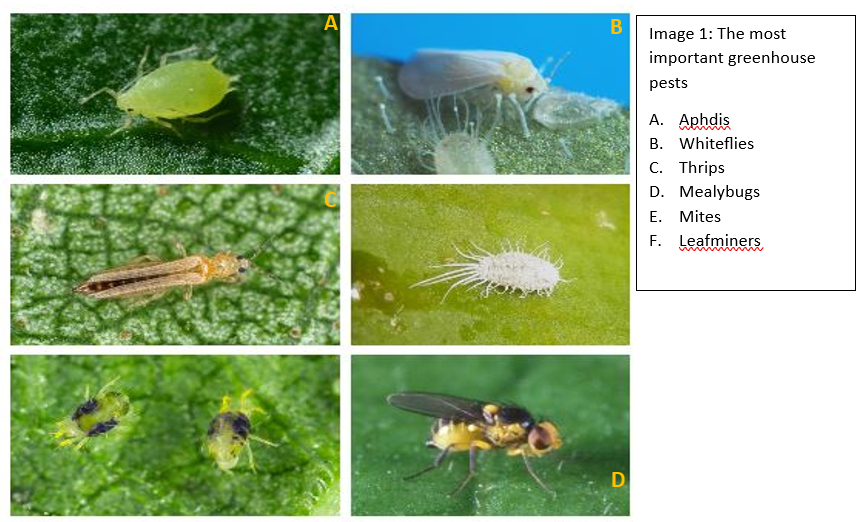
“Biological control of greenhouse pests …” from wikifarmer.com
Fostering Growth: Practical Tips for Thriving Plants
Healthy plants start with healthy soil. Make sure you’re providing your plants with the nutrients they need by adding compost or a balanced fertilizer to the soil. Rotate your crops to prevent soil-borne diseases and keep pests at bay.
Don’t forget about pollination – if you’re growing fruits or vegetables that require pollination, you might need to do it by hand or encourage pollinators into your greenhouse.
And finally, give your plants the room they need to grow. Crowded plants compete for light, water, and nutrients, which can lead to poor growth or disease. For more detailed guidance, check out our greenhouse growing secrets to help ensure your plants have the space they require.
Watering Wisdom: Keeping Plants Hydrated
Water is the essence of life, and in the greenhouse, it’s up to you to make sure your plants get the right amount. Overwatering can lead to root rot and disease, while underwatering can stress your plants and reduce their yield.
-
Check the soil before watering – it should be moist, not soggy or dry.
-
Water in the morning to allow any excess moisture to evaporate during the day.
-
Use room temperature water to avoid shocking the plants.
By following these tips, you can keep your greenhouse garden lush and productive.
Nutrition Know-How: Feeding Your Greenhouse Garden
Plants, just like people, need a balanced diet to thrive. In your greenhouse, you control what nutrients they get. A well-fed plant is a strong plant, one that’s more resilient to pests and diseases. Use a high-quality fertilizer that matches the needs of your plants – leafy greens might love nitrogen, while flowering plants might prefer phosphorus. It’s like cooking for your family, each plant has its favorite meal.
Keep an eye on your plants’ growth and look out for signs of nutrient deficiencies – pale leaves might mean they need more nitrogen, while weak stems could indicate a lack of potassium. It’s all about balance and giving your plants what they need, when they need it.
FAQs
How often should I water my greenhouse plants?
Watering is more of an art than a science. The key is consistency and observation. Stick your finger into the soil, if it’s dry an inch below the surface, it’s time to water. In a greenhouse, you might need to water your plants more frequently because the sun heats the enclosed space and dries out the soil. But be careful not to overdo it – waterlogged soil can be just as harmful as dry soil.
Do I need to use special soil in my greenhouse?
Yes and no. You don’t need ‘special’ soil, but you do need ‘good’ soil. This means well-draining, nutrient-rich, and non-compacted soil. You can create the perfect mix with compost, peat, and perlite or buy a pre-mixed potting soil designed for greenhouse use. Remember, the better the soil, the better your plants will grow.
What is the ideal temperature range for a greenhouse?
The perfect temperature range for your greenhouse depends on what you’re growing, but most plants thrive when the daytime temperature is between 70-80°F (21-27°C) and the nighttime temperature is between 60-68°F (15-20°C). Keep a thermometer in your greenhouse to monitor the temperature and make adjustments as needed.
Can I grow tropical plants in my greenhouse?
Absolutely! A greenhouse is an ideal place for tropical plants because you can create a warm and humid environment all year round. Just make sure your heating and humidity levels are up to the task during the colder months. With the right care, you could be sipping home-grown passionfruit juice in the dead of winter!
How do I control pests in my greenhouse?
Pests can be a challenge, but with vigilance and the right strategies, you can keep them under control. Introduce beneficial insects like ladybugs or lacewings to eat aphids and mites. Keep your greenhouse clean and remove any infested plants immediately. And, if you must, use organic pesticides as a last resort. Prevention is key – inspect new plants before bringing them into your greenhouse to avoid introducing pests in the first place.
And there you have it, your very own guide to starting and maintaining a greenhouse. Remember, every green thumb was once a novice, so don’t be afraid to get your hands dirty and learn as you grow. Your greenhouse is a living laboratory where patience and care yield the most beautiful results. Happy gardening!


